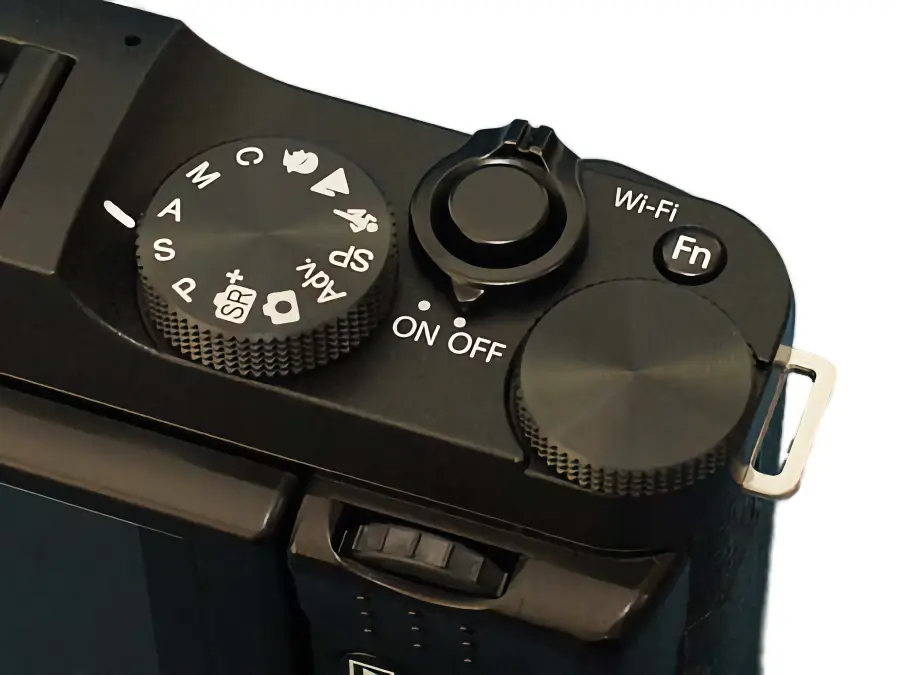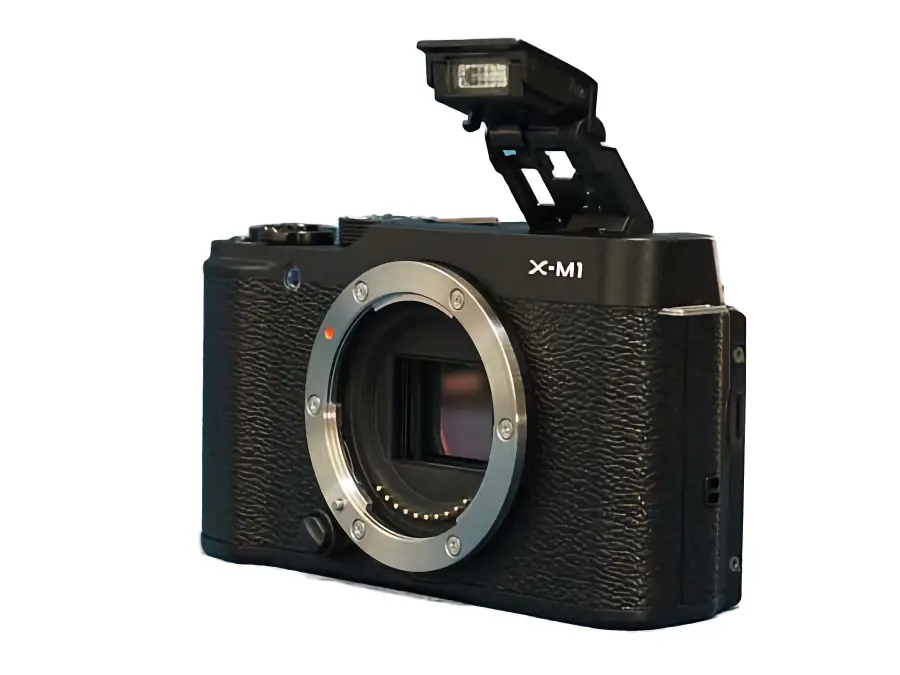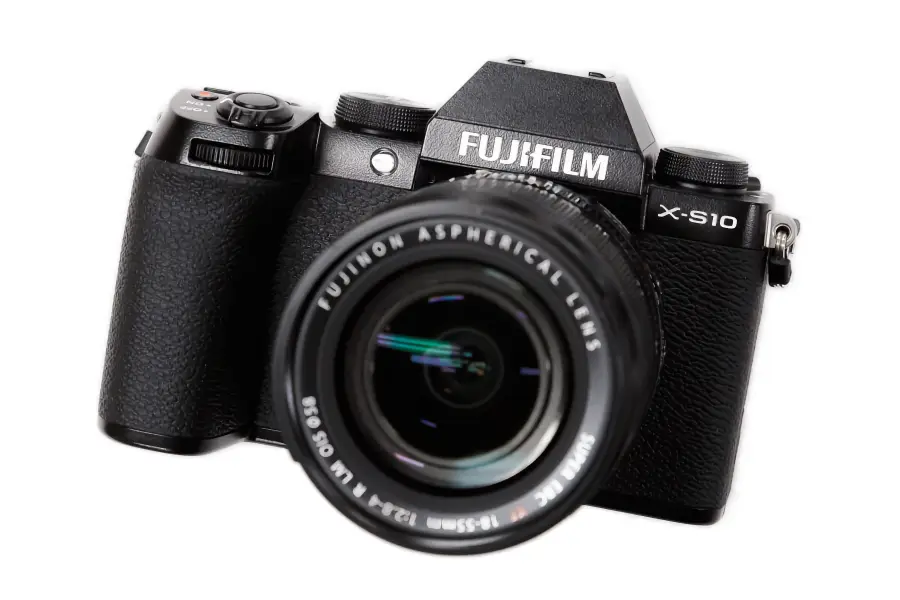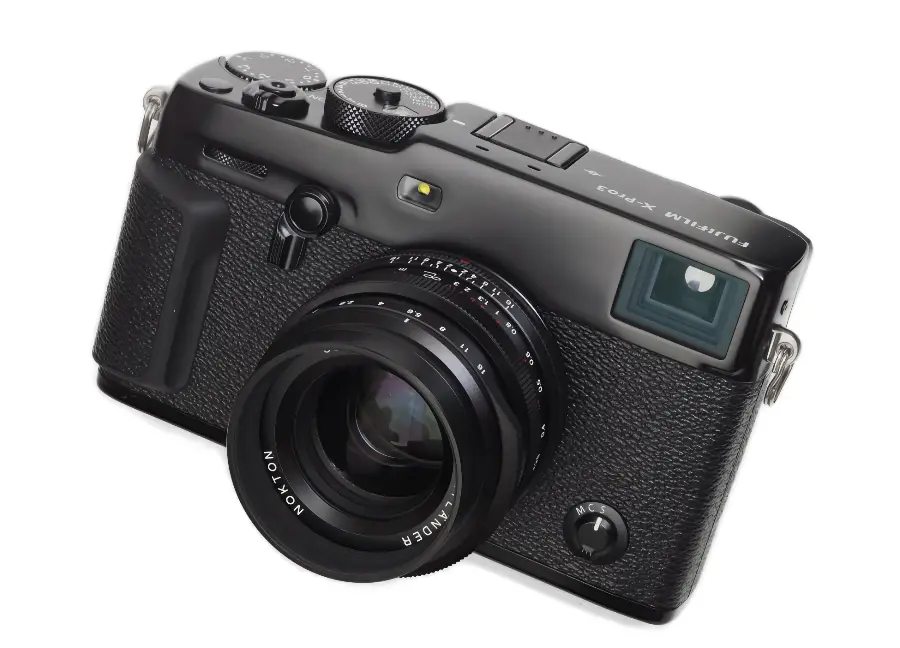
The Fujifilm X-M1, released in 2013, is a mirrorless camera that initially received limited attention due to its high price point. However, in 2025, it has been rediscovered as a hidden gem in the used market, offering remarkable value for money. In this review, we’ll examine the X-M1’s key features, pros and cons, and its current value in detail.
📊 Fujifilm X-M1 Key Specifications

| Specification | Details |
|---|---|
| Sensor | 16.3MP APS-C X-Trans CMOS |
| Processor | EXR Processor II |
| ISO Range | 200-6400 (expandable to 100-25600) |
| Continuous Shooting | Up to 5.6fps |
| Video | 1080/30p |
| LCD | 3.0-inch 920k dots tilting screen |
| Weight | Approx. 330g (including battery) |
| Dimensions | 116.9 x 66.5 x 39.0 mm |
| Release Date | June 2013 |
🎨 Design and Ergonomics: The Essence of Compactness
One of the Fujifilm X-M1’s most notable features is its compact size, which proves advantageous for everyday shooting and travel.
Ultra-Compact Body

- Size: 116.9 x 66.5 x 39.0 mm
- Weight: Approx. 330g (including battery)
The X-M1 is particularly small and light even among Fujifilm’s X series. The difference is notable when compared to the X-Pro1 or X-E1. This compact size is a significant advantage for daily carry and street photography.
Ergonomic Design

Despite its compact size, the X-M1 provides surprisingly comfortable handling. The slightly protruding front section enables a stable grip, and the two control dials on top can be easily operated with the thumb.
Tilting LCD Screen

The 3-inch 920k dot resolution tilting LCD screen is useful for low and high-angle shooting. On the viewfinder-less X-M1, this tilting screen is crucial for shooting from various angles.
📸 Image Quality: The Power of X-Trans Sensor
The heart of the X-M1 is its 16.3MP APS-C X-Trans CMOS sensor. This is the same sensor used in the X-Pro1 and X-E1, delivering exceptional image quality for its size.
The Allure of X-Trans Sensor

The X-Trans sensor uses a unique color filter array that reduces moiré patterns and delivers sharp images. The first-generation X-Trans sensor is particularly loved by many photographers for its film-like colors and tones.
Outstanding Low-Light Performance

Offering a native ISO range of 200-6400, expandable to ISO 100-25600, the camera provides excellent noise control even at high sensitivities despite its modest sensor size.
Fujifilm’s Film Simulation

The X-M1 supports Fujifilm’s famous film simulation modes. Through modes like Provia, Velvia, and Astia, users can apply unique color and tone characteristics directly in-camera. While it doesn’t offer as many options as newer models, the basic film simulation modes still produce attractive results.
🎥 Video Performance: Focused on Basics

The Fujifilm X-M1’s video capabilities focus on the essentials. It can record full HD 1080/30p video, sufficient for casual video recording.
1080/30p Recording
Capable of recording Full HD resolution at 30fps. While lacking 4K or high frame rate options, it provides adequate quality for general purposes.
Built-in Stereo Microphone
Features a built-in stereo microphone for basic audio recording. The absence of an external microphone input limits professional audio recording capabilities.
Continuous AF Support
Supports continuous autofocus during video recording, enabling tracking of moving subjects. However, AF speed and accuracy may be inferior compared to newer models.
🚀 Autofocus and Performance: Limitations of Its Era

The X-M1’s autofocus system is somewhat limited by modern standards. However, this limitation can actually encourage more deliberate shooting.
Contrast-Based AF System
The X-M1 uses a contrast-detection AF system, which is slower compared to modern phase-detection or hybrid AF systems. Performance may particularly degrade in low light or with low-contrast subjects.
Limited AF Point Selection
AF point selection is done via the D-pad, with fewer AF points compared to newer models. While this might limit precise focus control, it can encourage more thoughtful composition.
5.6fps Continuous Shooting
Offers continuous shooting at up to 5.6fps. While this might be insufficient for sports or wildlife photography, it’s adequate for everyday snap shooting.
🔋 Battery Performance and Connectivity: Practicality in Focus

Battery Performance

Using the NP-W126 lithium-ion battery, it can capture approximately 350 images per charge. This is comparable to other mirrorless cameras in its class. For extended shooting sessions, carrying spare batteries is recommended.
Wi-Fi Connectivity
Built-in Wi-Fi enables photo transfer to smartphones or tablets and remote shooting capabilities. The inclusion of this feature is noteworthy for a 2013 model.
Ports and Interfaces

- USB 2.0 port
- Mini HDMI output
- Hot shoe
Provides basic connectivity options sufficient for everyday use. The lack of a microphone input port may limit professional video production capabilities.
💡 User Experience: Strengths and Areas for Improvement

Real-world usage reveals several distinct advantages and limitations.
Advantages
- Excellent Portability: Compact size and light weight make it very convenient for daily carry
- Superior Image Quality: The X-Trans sensor delivers exceptional image quality for its size
- Film Simulation: Fujifilm’s unique film simulation enables distinctive color expression
- Value for Money: Offers remarkable value in the current used market
Areas for Improvement
- No Viewfinder: Relying solely on the LCD screen may inconvenience some users
- Limited Customization: Only one customizable button restricts personalization
- AF Performance: Slower and less accurate autofocus compared to newer models
- Plastic Body: May feel less premium and durable to some users
📊 Comparison with Competitors
Let’s compare the X-M1 with similarly priced competitors.
1. Sony NEX-3N

- Advantages: More compact size, higher resolution (16.1MP)
- Disadvantages: Lacks X-Trans sensor’s unique color reproduction, more limited lens selection
2. Olympus E-PL5

- Advantages: Built-in image stabilization, faster AF performance
- Disadvantages: Smaller Micro Four Thirds sensor, inferior low-light performance
3. Panasonic Lumix GF6

- Advantages: Touchscreen, NFC support, more creative modes
- Disadvantages: Smaller Micro Four Thirds sensor, lower resolution than X-M1
Compared to these competitors, the X-M1 excels in sensor size, image quality, and Fujifilm’s distinctive color processing. However, it may lag slightly in AF performance and some modern features.
🎞️ Real-World Scenarios
Street Photography

The X-M1’s compact size and quiet shutter make it ideal for street photography. While lacking a viewfinder, the tilting LCD enables natural shooting from waist or chest level, allowing for candid shots without drawing attention.
Travel Photography

Light weight and small size make it perfect for carrying while traveling. Paired with the XF 27mm f/2.8 pancake lens, it becomes pocket-sized, ready for shooting anywhere, anytime.
Everyday Snapshots

The X-Trans sensor’s excellent color reproduction and film simulation capabilities beautifully capture everyday moments. Superior JPEG output quality enables immediate sharing without post-processing.
Landscape Photography

While the 16MP sensor might seem modest by modern standards, it provides sufficient detail for landscape photography. The Velvia film simulation mode particularly excels at producing vibrant landscape colors.
🔧 Recommended Accessories and Lenses

Here are some recommended accessories and lenses to enhance the X-M1’s capabilities.
Recommended Accessories
- Hot Shoe Thumb Rest: An affordable and effective accessory for improved ergonomics
- Leather Case: Combines protection with style
- Additional Batteries: Essential for extended shooting sessions
Recommended Lenses
- XF 27mm f/2.8: Compact pancake lens maximizing portability
- XF 35mm f/2 R WR: High-performance prime lens with standard focal length
- TT Artisan’s 25mm F2: Budget-friendly manual focus lens
These accessories and lenses can significantly enhance the X-M1’s performance and user experience.
🏁 Conclusion: Who is the X-M1 For?

The Fujifilm X-M1 remains an attractive option even in 2025, particularly suitable for:
- Beginners seeking a compact mirrorless camera
- Those wanting an affordable entry into the Fujifilm system
- Photographers who prefer film-like colors and looks
- Professionals needing a light, portable backup camera
- Users seeking maximum image quality within a limited budget
However, it might be limiting for:
- Sports/wildlife photographers needing fast AF and high-speed continuous shooting
- Videographers requiring 4K video and advanced video features
- Users wanting the latest technology and features
Overall, the X-M1 offers exceptional value considering its image quality, compact size, and current price point. Despite some functional limitations, its unique color reproduction and film simulations remain attractive.
Scoring 8 out of 10, this camera is an excellent choice particularly for beginners interested in the Fujifilm system or photographers seeking a lightweight backup camera. Even in 2025, the X-M1 remains a small but mighty mirrorless camera that maintains its value.








